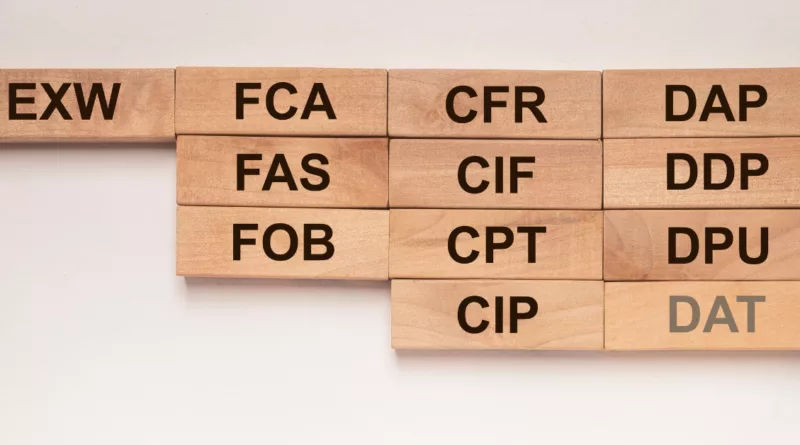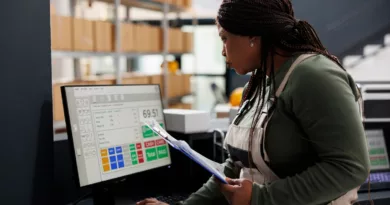In the complex world of international trade, clear communication and well-defined responsibilities are paramount. Enter Incoterms, or International Commercial Terms, a set of globally recognized rules that define the responsibilities of buyers and sellers in international transactions. Developed by the International Chamber of Commerce (ICC), Incoterms have been simplifying global trade since 1936, with periodic updates to keep pace with evolving commercial practices.
This article delves into the intricacies of Incoterms, exploring their significance, structure, and application in real-world scenarios. We’ll examine each of the 11 Incoterms in the current Incoterms 2020 set, provide explanations of their use, and present case studies to illustrate their practical application.
Understanding Incoterms
Incoterms are three-letter codes that specify:
1. The division of costs between buyer and seller
2. The point at which risk transfers from seller to buyer
3. Who is responsible for import/export clearance
4. Who is responsible for loading and unloading goods
These terms are crucial in international sales contracts, providing a common language that reduces misunderstandings and legal disputes. It’s important to note that Incoterms do not constitute a complete contract of sale; they are incorporated into existing sales contracts to clarify specific aspects of the transaction.
The 11 Incoterms 2020
Incoterms 2020, the most recent version, includes 11 terms divided into two categories:
Rules for Any Mode of Transport:
1. EXW (Ex Works)
2. FCA (Free Carrier)
3. CPT (Carriage Paid To)
4. CIP (Carriage and Insurance Paid To)
5. DAP (Delivered at Place)
6. DPU (Delivered at Place Unloaded)
7. DDP (Delivered Duty Paid)
Rules for Sea and Inland Waterway Transport:
8. FAS (Free Alongside Ship)
9. FOB (Free on Board)
10. CFR (Cost and Freight)
11. CIF (Cost, Insurance, and Freight)
Let’s examine each of these terms in detail:
1. EXW (Ex Works)
Explanation: Under EXW, the seller’s responsibility is minimal. They must make the goods available at their premises or another named place. The buyer bears all costs and risks involved in taking the goods from the seller’s premises to the desired destination.
Case Study: A small electronics manufacturer in Shenzhen, China sells components to a buyer in Germany under EXW terms. The seller’s only responsibility is to package the goods and have them ready for collection at their factory. The German buyer must arrange for transportation from the factory, handle export and import clearance, and bear all costs and risks from the moment the goods are made available at the seller’s premises.
2. FCA (Free Carrier)
Explanation: The seller delivers the goods, cleared for export, to the carrier nominated by the buyer at a named place. The seller’s responsibility ends when the goods are handed over to the carrier.
Case Study: A textile exporter in India sells fabrics to a clothing manufacturer in Italy under FCA terms. The Indian seller is responsible for delivering the goods to the carrier chosen by the Italian buyer at Mumbai port. Once the goods are loaded onto the ship, the seller’s responsibility ends, and the risk transfers to the buyer.
3. CPT (Carriage Paid To)
Explanation: The seller pays for the carriage of goods to a named destination. Risk transfers to the buyer when the goods are handed over to the first carrier.
Case Study: A Canadian lumber company sells wood to a furniture maker in Japan under CPT terms. The Canadian seller arranges and pays for transportation to Yokohama port but bears the risk only until the goods are handed over to the first carrier in Vancouver.
4. CIP (Carriage and Insurance Paid To)
Explanation: Similar to CPT, but the seller also contracts for insurance cover against the buyer’s risk of loss or damage to the goods during carriage.
Case Study: A pharmaceutical company in Switzerland ships medicines to a distributor in Brazil under CIP terms. The Swiss company arranges and pays for transportation to São Paulo and also provides insurance coverage. The risk transfers to the Brazilian buyer when the goods are handed over to the first carrier in Switzerland.
5. DAP (Delivered at Place)
Explanation: The seller delivers when the goods are placed at the disposal of the buyer on the arriving means of transport ready for unloading at the named place of destination. The seller bears all risks involved in bringing the goods to the named place.
Case Study: A French wine exporter sells to a US importer under DAP terms. The French seller is responsible for delivering the wine to the buyer’s warehouse in New York, bearing all costs and risks until the goods are ready for unloading at the warehouse.
6. DPU (Delivered at Place Unloaded)
Explanation: The seller delivers and unloads the goods at a named place of destination. The seller bears all risks involved in bringing the goods to and unloading them at the named place of destination.
Case Study: A German machinery manufacturer sells industrial equipment to a factory in Turkey under DPU terms. The German company is responsible for delivering the machinery to the Turkish factory and unloading it there, bearing all costs and risks until the unloading is complete.
7. DDP (Delivered Duty Paid)
Explanation: The seller bears all costs and risks involved in bringing the goods to the place of destination, including any import duties and taxes.
Case Study: A US software company sells specialized software to a government agency in South Korea under DDP terms. The US company is responsible for all aspects of delivery, including transportation, export and import clearance, and payment of all duties and taxes in South Korea.
8. FAS (Free Alongside Ship)
Explanation: The seller delivers when the goods are placed alongside the vessel at the named port of shipment. The buyer bears all costs and risks of loss or damage to the goods from that moment.
Case Study: A Chilean copper mining company sells ore to a smelter in Japan under FAS terms. The Chilean company’s responsibility ends when the ore is placed alongside the ship at Valparaíso port. The Japanese buyer is responsible for loading the ore onto the ship and all subsequent transportation and risks.
9. FOB (Free on Board)
Explanation: The seller delivers the goods on board the vessel nominated by the buyer at the named port of shipment. The risk transfers when the goods are on board the vessel.
Case Study: An Australian wheat farmer exports grain to a mill in Indonesia under FOB terms. The Australian seller is responsible for delivering the wheat on board the ship at Sydney port. Once the wheat is loaded, all further costs and risks are borne by the Indonesian buyer.
10. CFR (Cost and Freight)
Explanation: The seller pays for the carriage of the goods up to the named port of destination. Risk transfers to the buyer when the goods are loaded on the vessel.
Case Study: A Brazilian soybean exporter sells to a food processor in China under CFR terms. The Brazilian company arranges and pays for transportation to Shanghai port, but the risk transfers to the Chinese buyer as soon as the soybeans are loaded onto the ship in Santos, Brazil.
11. CIF (Cost, Insurance, and Freight)
Explanation: Similar to CFR, but the seller also contracts for insurance cover against the buyer’s risk of loss or damage to the goods during the carriage.
Case Study: A Thai rice exporter sells to a distributor in the United Arab Emirates under CIF terms. The Thai company arranges and pays for transportation to Dubai port and provides insurance coverage. The risk transfers to the UAE buyer when the rice is loaded onto the ship in Bangkok.
Incoterms play a crucial role in facilitating international trade by providing a common language for buyers and sellers. They clearly delineate responsibilities, costs, and risks, thereby reducing the potential for misunderstandings and disputes. However, it’s important to remember that Incoterms are just one part of a sales contract. Parties should always ensure that their contracts address all relevant aspects of the transaction, including payment terms, quality specifications, and dispute resolution mechanisms.
As global trade continues to evolve, so too will Incoterms. The next update is expected in 2030, and it will likely reflect changes in technology, security concerns, and emerging trade practices. For businesses engaged in international trade, staying informed about Incoterms and their proper application is not just good practice—it’s essential for smooth, efficient, and successful global commerce.








